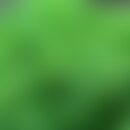DefinitionThis section has been translated automatically.
In East Asia, there is a 2000-year-old tradition of using schisandra fruit as an adaptogen. In traditional Chinese medicine (TCM), the schisandra berry is considered to be the most effective natural remedy. The fruits are not usually used monotherapeutically, but as a mixture with other drugs in formulations. There are no official monographs for Schisandra chinensis, the Chinese split berry, in Europe, but there are in Chinese and Japanese pharmacopoeias. The Chinese pharmacopoeia records the dried, ripe fruits of two botanical species (Schisandra chinensis and Schisandra sphenanthera) under the common name "Wuweizi".
Schisandra chinensis contains mainly lignans such as schisandrol A (syn: gomisin A, schizandrol A), schisantherin A, deoxyschisandrin, schisandrin B and schisandrin C. Furthermore, various Polysaccharides with immunostimulating effect, essential oil.
Field of application/useThis section has been translated automatically.
Extracts of Schisandra chinensis have antioxidant, free radical scavenging and immunostimulating effects. Hepatoprotective effects have been demonstrated in animal experiments. Several positive oncological studies indicate an influence on cell division and apoptosis .
Improvements in concentration and cognitive performance are less well documented. There is insufficient evidence for applications as a neuroleptic and anticonvulsant, sexual tonic, for indications such as Parkinson's disease, fibromyalgia and diabetes.
You might also be interested in
Dosage and method of useThis section has been translated automatically.
1.5 to 3 g of the drug (schisandra powder)/day p.o. is recommended.
Note(s)This section has been translated automatically.
Schisandra chinensis is one of the few adaptogens that meet the EMA criteria for this group of active ingredients; they also include: Eleutherococcus senticosus (taiga root), Ginseng Radix (ginseng root), Rhodiola rosea radix (roseroot).
LiteratureThis section has been translated automatically.
- Chen Y et al (2012) An immunostimulatory polysaccharides (SCP-IIa) from the fruit of Schisandra chinensis (Turcz.) Baill. Int J Biol Macromol 50:844-848.
- Cheng Z et al (2014) Two-steps extraction of essential oil, polysaccharides and biphenyl cyclooctene lignans from Schisandra chinensis Baill fruits. J Pharm Biomed Anal 96:162-169.
- Hager's Manual of Pharmaceutical Practice (1994) p. 646.
- Ip S P et al (2001) Effects of schisandrin B pretreatment on tumor necrosis factor-alpha induced apoptosis and Hsp70 expression in mouse liver. Cell Stress Chaperones 6: 44-48.
- Ko K M et al (2002) Protection against carbon tetrachloride liver toxicity by enantiomers of schisandrin B associated with differential changes in hepatic glutathione antioxidant system in mice. Pharm Biol 40: 298-301.
- Lee IS et al (1999) Structure-activity relationships of lignans from Schisandra chinensis as platelet activating factor antagonists. Biol Pharm Bull 22: 265-267.
- Qu HM et al (2014) Antitumor and antiangiogenic activity of Schisandra chinensis polysaccharides in a renal cell carcinoma model. Int J Biol Macromol 66:52-56.
- Wang N et al (2002) Sheng-Mai-San is protective against post-ischemic myocardial dysfunction in rats through its opening of the mitochondrial KATP channels. Circ J 66: 763-768.
- Yan F et al (2009) Synergistic hepatoprotective effect of Schisandrae lignans with Astragalus polysaccharides on chronic liver injury in rats. Phytomedicine 16:805-813.




